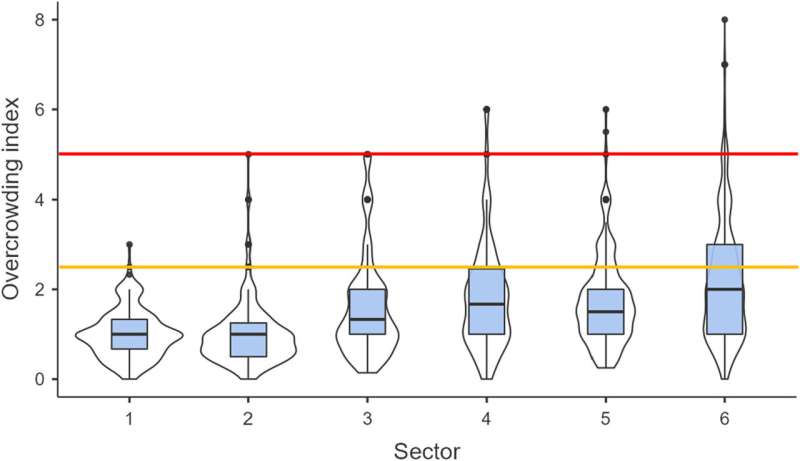This article has been reviewed according to Science X's editorial process and policies. Editors have highlighted the following attributes while ensuring the content's credibility:
fact-checked
trusted source
proofread
Research analyzes energy poverty in La Cañada Real, Spain

About 4,000 people in Madrid, almost half of the inhabitants of La Cañada Real, have experienced extreme energy poverty. That is one of the conclusions of a study by researchers at the Universidad Carlos III de Madrid (UC3M) that analyses the energy uses and needs of the population of La Cañada Real Galiana between 2020 and 2022.
La Cañada Real Galiana, as it passes through the Community of Madrid, crosses the municipalities of Coslada, Madrid, Rivas-Vaciamadrid and Getafe. Irregular buildings with a wide variety of constructions (from chalets to substandard housing) stretch along 16 kilometers, in which around 8,000 people live.
This route is divided into six sectors with different characteristics in terms of infrastructures or purchasing power of its inhabitants and with different futures in terms of the legalization of the settlement; sectors 5 and 6, especially the latter, have the worst basic living conditions. More than three years ago, the electricity supply was cut off in these sectors, leaving more than 4,000 people without power, of which around 1,800 were minors.
"We began the research on the 29th of September 2020 (after signing a collaboration agreement with the Community of Madrid) and just three days later, on the 2nd of October, the power supply was cut in sectors 5 and 6," says one of the researchers, Jorge Martínez Crespo, Associate Professor in UC3M's Electrical Engineering Department. "We then focused on the impact of this power cut on the homes in these sectors and measured the environmental conditions inside the houses," he adds.
What they found shows a global overview of high social vulnerability, with extreme situations of cold and heat depending on the seasons. "It is possible, and even common in homes with several indicators of instability (low income, poor building quality, inadequate equipment or homes affected by disconnections), to identify temperatures in the most used rooms below 10°C in winter or even above 40°C in summer," says another of the researchers, Ulpiano Ruiz-Rivas Hernando, head of UC3M's Appropriate Technologies for Sustainable Development Group.
"These types of measures allow us to identify the circumstances there and should allow political action to resolve these problems," says Ulpiano Ruiz-Rivas. In this sense, the report recommends restoring the electricity supply in sector 6, which has been without electricity since October 2020.
"It doesn't seem justifiable that after the sudden power cut, more than three years ago, no structural measures have been implemented," say the authors of the study, recently published in the journal Energy Research & Social Science by Ulpiano Ruiz-Rivas and Jorge Martínez-Crespo together with Sergio Tirado-Herrero (Autonomous University of Madrid) and Raúl Castaño Rosa (University of Tampere, Finland).
The four of them regret that no diversification of supply has been undertaken, given the existence of other medium-voltage power lines in the area that could alleviate the overload. They also noticed the lack of a tender to develop collective self-consumption facilities from the nearest public facilities.
The power cut also posed a "threat" to other sectors of La Cañada Real, according to the researchers. As a result, the inhabitants of the area looked for alternative sources of supply, such as solar panels or diesel generators, which can be seen today along different points of the route and which represent the fundamental change in terms of electricity generation or production.
"As a result of the emergency situation created by the disconnection of the power supply, there is increased instability and the emergence of cases of extreme energy poverty that would be difficult to find in other areas of the EU or in the global North in general," the project report states.
In order to carry out this research, the analysis of census data of the entire population of La Cañada was combined with a more specific study of a sample of households. To do so, on the one hand, interviews were carried out on energy use and needs and, on the other hand, there were campaigns to measure indoor environment conditions in homes, together with temporary monitoring of the power supply continuity in sectors 5 and 6 of La Cañada. This approach is what has made it possible to visualize and characterize the problems linked to access to energy faced by the population of La Cañada Real Galiana, the researchers say.
A situation generating some controversy in this area is the drug market, which is located approximately one kilometer inside sector 6. "This can logically have an energy impact, because there is a large demand for electricity for the marijuana plantations, but we haven't taken measurements in that area.
"But what we have been able to measure is the impact of an intervention in a marijuana plantation, with the destruction of the electrical installation in the area and the resulting supply disruption in a certain area, which affects other neighbors who live nearby and who have nothing to do with it," says Jorge Martínez.
More information: Ulpiano Ruiz-Rivas et al, Disconnected, yet in the spotlight: Emergency research on extreme energy poverty in the Cañada Real informal settlement, Spain, Energy Research & Social Science (2023). DOI: 10.1016/j.erss.2023.103182
Provided by Carlos III University of Madrid




















